
Struggling to find the best sports facilities tools for your business? You’re not alone. Managing a sports facility in 2025 comes with unique challenges. Whether


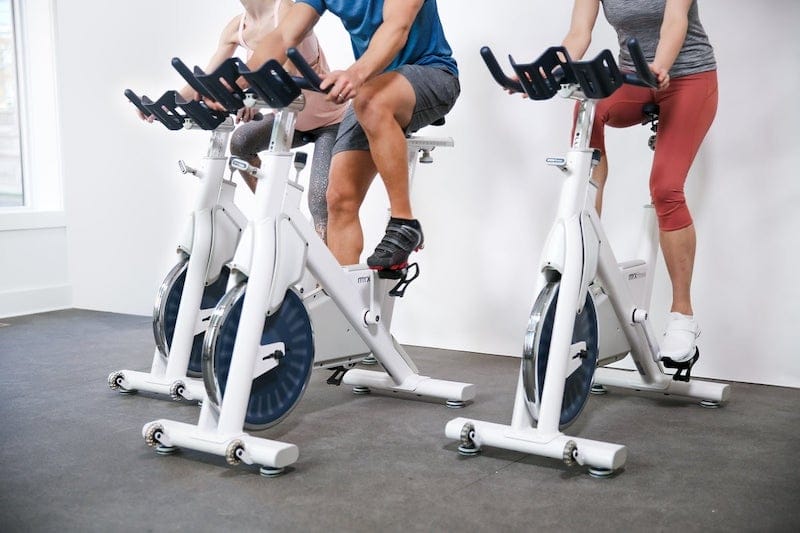 As a newer entry to the at-home fitness equipment market, The MYX Bike shows some promise as a valuable bike option. The MYX utilizes AI to offer personalized workout recommendations, scoring high in the technology category, however it is missing some of the “bells and whistles” of other at-home fitness equipment.
While MYX does have quality coaches in each of its various categories, it only offers on-demand classes. MYX places a large emphasis on heart rate and competing with yourself, so it lacks the competition and social connectivity of engaging in a “live” class like other equipment.
Score: 2.6/5
As a newer entry to the at-home fitness equipment market, The MYX Bike shows some promise as a valuable bike option. The MYX utilizes AI to offer personalized workout recommendations, scoring high in the technology category, however it is missing some of the “bells and whistles” of other at-home fitness equipment.
While MYX does have quality coaches in each of its various categories, it only offers on-demand classes. MYX places a large emphasis on heart rate and competing with yourself, so it lacks the competition and social connectivity of engaging in a “live” class like other equipment.
Score: 2.6/5
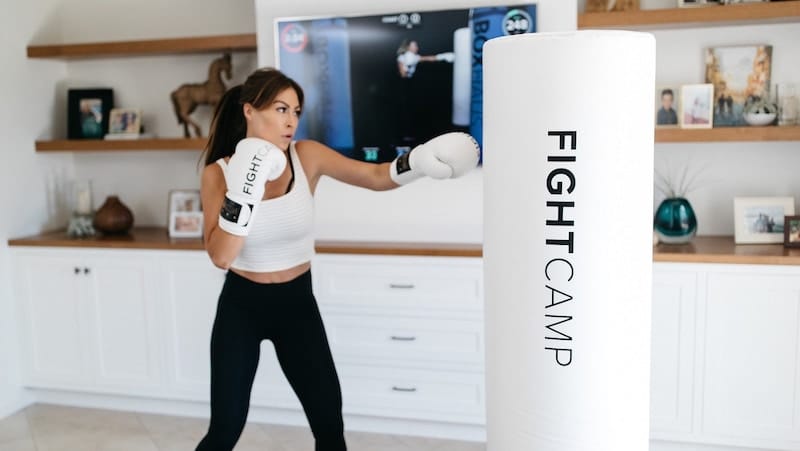 FightCamp is perhaps one of the more unique home fitness equipment options on the market, as a connected at-home boxing experience. FightCamp has also invested in innovation, as the gloves include smart sensors that track reps, output, and other data. This allows users to track their own progress, as well as compete with other users in the FightCamp community.
Because of this very niche workout segment, this option does lack in content variety, as users will have limited workout options. In terms of additional needs beyond the equipment, water or sand is required to finish assembly and weight the bag, making ease of use more difficult than other options.
Score: 2.6/5
FightCamp is perhaps one of the more unique home fitness equipment options on the market, as a connected at-home boxing experience. FightCamp has also invested in innovation, as the gloves include smart sensors that track reps, output, and other data. This allows users to track their own progress, as well as compete with other users in the FightCamp community.
Because of this very niche workout segment, this option does lack in content variety, as users will have limited workout options. In terms of additional needs beyond the equipment, water or sand is required to finish assembly and weight the bag, making ease of use more difficult than other options.
Score: 2.6/5
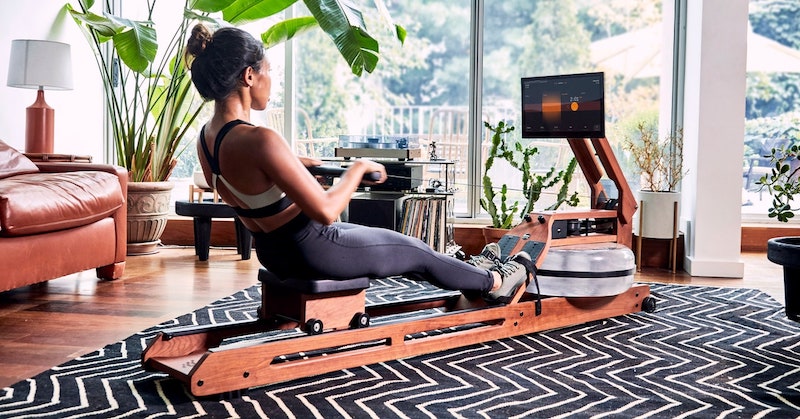 Ergatta, an at-home rowing machine, has added a gamification aspect to the home workout experience. Ergatta emphasizes the community and competitive aspects of exercise by focusing on the social connectivity within the Ergatta community.
With a gamification approach, there are no trainer-led workouts within Ergatta, ranking it low in the talent category and affecting its overall score. Consequently, there are no live classes. This is another very niche equipment option: while there are a few different workout types within Ergatta, users are limited solely to this modality.
Score: 2.6/5
Ergatta, an at-home rowing machine, has added a gamification aspect to the home workout experience. Ergatta emphasizes the community and competitive aspects of exercise by focusing on the social connectivity within the Ergatta community.
With a gamification approach, there are no trainer-led workouts within Ergatta, ranking it low in the talent category and affecting its overall score. Consequently, there are no live classes. This is another very niche equipment option: while there are a few different workout types within Ergatta, users are limited solely to this modality.
Score: 2.6/5
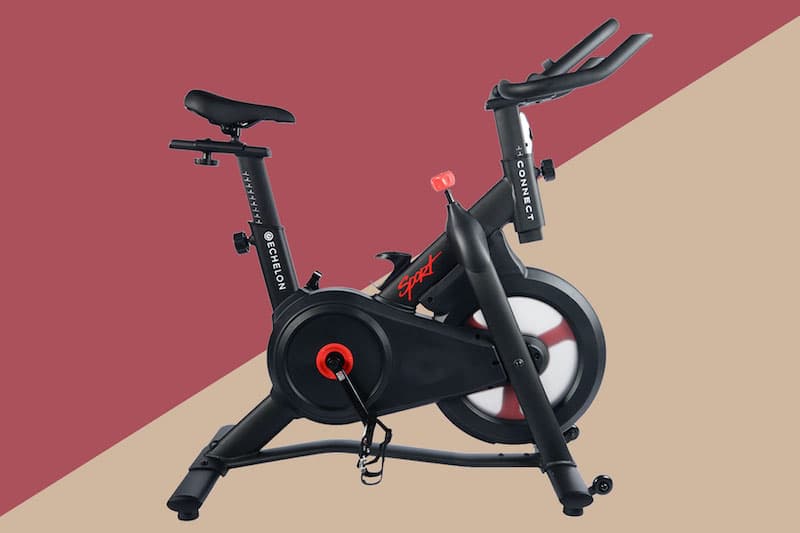 The Echelon Bike is another exercise bike on the market. Echelon offers a wide variety of content options, including cycling, yoga, boxing,HIIT, and more, scoring it high in the production category. Echelon recently announced a collaboration with Mario Lopez, introducing celebrity workout options, scoring it points in the talent category as well.
Despite these draws, it does lack advanced technology. Echelon’s standard bike comes without a screen to stream the workouts. This means that users must connect and clip in their own device to the bike.The bike also lacks some of the AI elements that other options have incorporated.
Score: 2.8/5
The Echelon Bike is another exercise bike on the market. Echelon offers a wide variety of content options, including cycling, yoga, boxing,HIIT, and more, scoring it high in the production category. Echelon recently announced a collaboration with Mario Lopez, introducing celebrity workout options, scoring it points in the talent category as well.
Despite these draws, it does lack advanced technology. Echelon’s standard bike comes without a screen to stream the workouts. This means that users must connect and clip in their own device to the bike.The bike also lacks some of the AI elements that other options have incorporated.
Score: 2.8/5
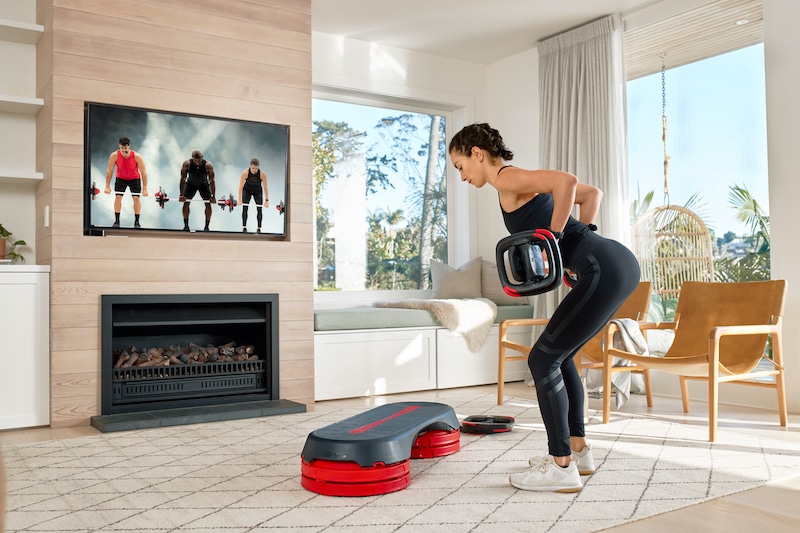 While this is not a traditional equipment option, LesMills Digital offers a variety of at-home fitness workouts at various modalities, so we’ve included it in our analysis. LesMills has built a strong community of in-person offerings, so has been able to navigate the virtual and at-home fitness options with ease. LesMills scored the highest in the ease of use category, due to the fact that there are no barriers to entry beyond the cost of the membership.
While easy to use, LesMills Digital does lack the technology that physical equipment options offer. Any type of fitness tracking would need to be done via another app or piece of equipment. Additionally, while there is an in-person community and online presence, the workout experience lacks the social connectivity, competition, and in-studio experience.
Score: 2.9/5
While this is not a traditional equipment option, LesMills Digital offers a variety of at-home fitness workouts at various modalities, so we’ve included it in our analysis. LesMills has built a strong community of in-person offerings, so has been able to navigate the virtual and at-home fitness options with ease. LesMills scored the highest in the ease of use category, due to the fact that there are no barriers to entry beyond the cost of the membership.
While easy to use, LesMills Digital does lack the technology that physical equipment options offer. Any type of fitness tracking would need to be done via another app or piece of equipment. Additionally, while there is an in-person community and online presence, the workout experience lacks the social connectivity, competition, and in-studio experience.
Score: 2.9/5
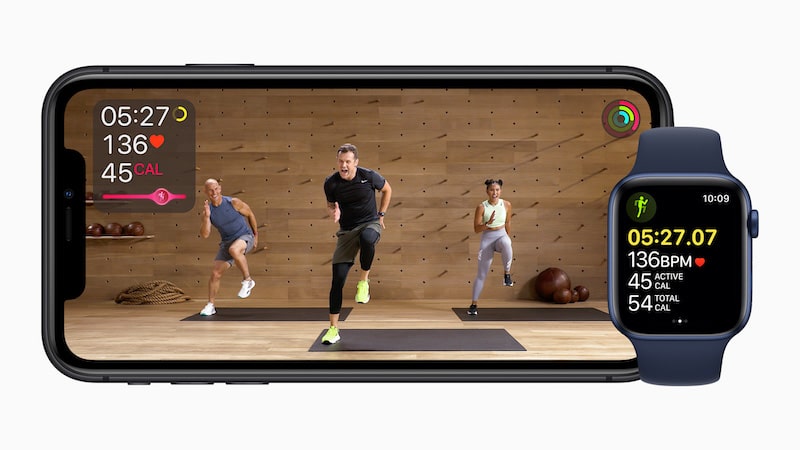 Apple Fitness+ is another non-traditional equipment option, however the connective fitness aspects of it make it a popular choice, especially amongst Apple Watch users. They offer strong health and fitness connection capabilities, with the ability to set daily workout goals.
Apple Fitness+ offers a wide variety of genres, however, as a new addition to Apple, it has not built up the library of workouts that other fitness options contain. Also, similar to LesMills Digital there is a lack of social connectivity as well as AI or smart sensors, ranking it low in the technology category.
Score: 2.9/5
Apple Fitness+ is another non-traditional equipment option, however the connective fitness aspects of it make it a popular choice, especially amongst Apple Watch users. They offer strong health and fitness connection capabilities, with the ability to set daily workout goals.
Apple Fitness+ offers a wide variety of genres, however, as a new addition to Apple, it has not built up the library of workouts that other fitness options contain. Also, similar to LesMills Digital there is a lack of social connectivity as well as AI or smart sensors, ranking it low in the technology category.
Score: 2.9/5
 Tempo is an AI-guided home gym that includes a complete set of free weights. They scored extremely high in the technology category, as it has built-in 3D sensors that count reps, capture movement and offer real-time feedback to users. Tempo aims to offer an in-gym experience similar to working out with a personal trainer.
Where Tempo lacks is in some of the talent and production elements. As another niche equipment option, Tempo is focused on weight lifting. Because of that, the content and trainer variety is more narrow than other at-home fitness equipment options.
Score: 3.2/5
Tempo is an AI-guided home gym that includes a complete set of free weights. They scored extremely high in the technology category, as it has built-in 3D sensors that count reps, capture movement and offer real-time feedback to users. Tempo aims to offer an in-gym experience similar to working out with a personal trainer.
Where Tempo lacks is in some of the talent and production elements. As another niche equipment option, Tempo is focused on weight lifting. Because of that, the content and trainer variety is more narrow than other at-home fitness equipment options.
Score: 3.2/5
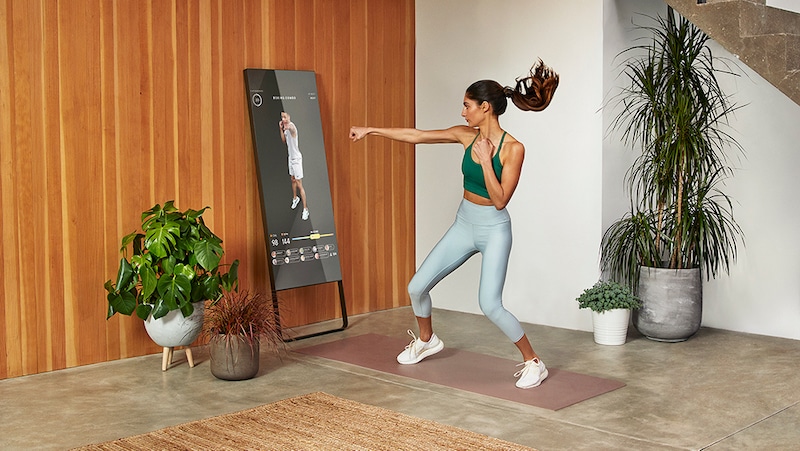 Dubbed the nearly invisible home gym, Mirror offers a complete home gym experience behind what looks like home decor. Mirror had consistently high marks throughout all categories, however ranked especially high in content selection. Mirror boasts workouts from 5 to 60 minutes in over 50 genres, from high-intensity cardio to recovery.
For the amount of workouts that are offered, the trainer variety was rather low, meaning that there may only be a couple trainers that teach each type of workout. Users are somewhat limited if they do not resonate with a particular coach or workout style.
Score: 4/5
Dubbed the nearly invisible home gym, Mirror offers a complete home gym experience behind what looks like home decor. Mirror had consistently high marks throughout all categories, however ranked especially high in content selection. Mirror boasts workouts from 5 to 60 minutes in over 50 genres, from high-intensity cardio to recovery.
For the amount of workouts that are offered, the trainer variety was rather low, meaning that there may only be a couple trainers that teach each type of workout. Users are somewhat limited if they do not resonate with a particular coach or workout style.
Score: 4/5
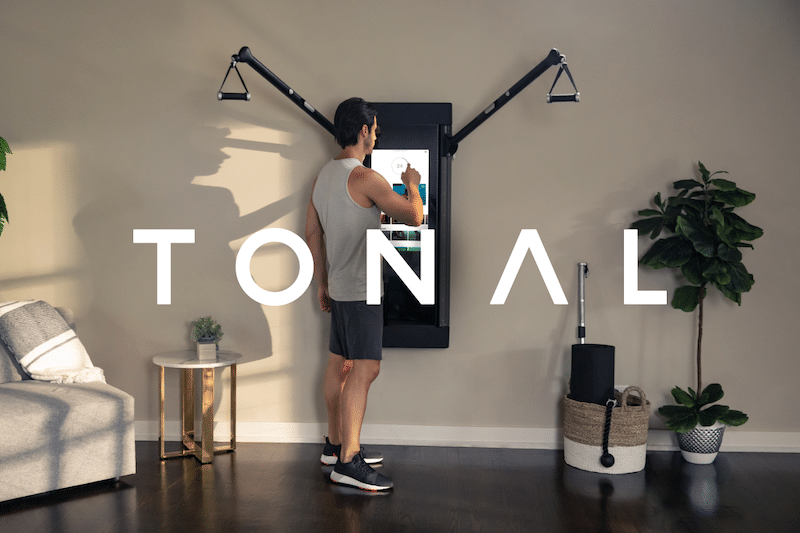 Tonal is another home strength training option, using AI and predictive analytics to offer individualized workout suggestions. They also boast high marks throughout each category, but especially in technology and innovation. Tonal includes smart sensors that not only offer form feedback, but dynamically adjust the weight as you gain strength. The brand provides opportunities for users to lift freely, without following a guided workout.
Because of the nature of this equipment, there is little flexibility outside of the equipment to complete a workout. The accompanying app helps users plan and search for workouts for their Tonal, however, content is only distributed within the piece of equipment.
Score 4/5
Tonal is another home strength training option, using AI and predictive analytics to offer individualized workout suggestions. They also boast high marks throughout each category, but especially in technology and innovation. Tonal includes smart sensors that not only offer form feedback, but dynamically adjust the weight as you gain strength. The brand provides opportunities for users to lift freely, without following a guided workout.
Because of the nature of this equipment, there is little flexibility outside of the equipment to complete a workout. The accompanying app helps users plan and search for workouts for their Tonal, however, content is only distributed within the piece of equipment.
Score 4/5
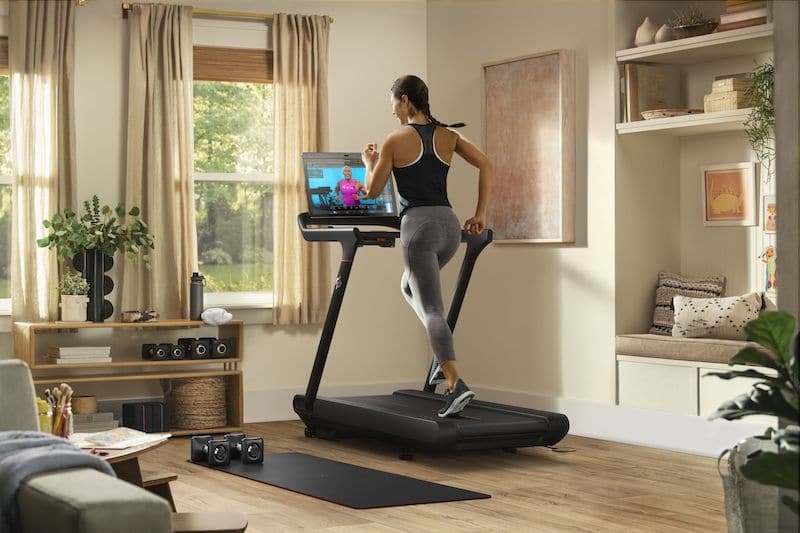 Peloton may be most known for its bikes, however the newest equipment to the Peloton family is the Peloton Tread. As with other Peloton training options, the quality and variety of class offerings and trainers make this a popular addition to a home gym. This gives it a high score in the production and talent categories. The scores for the community and social connectivity pieces were also high, contributing to the feelings of immersion in an in-person class.
One area of weakness is the lack of innovation and AI within the Peloton Tread. Whereas other options have built-in technology to complement workouts, Peloton relies on the immersive experience of competition to draw positive experiences.
Score: 4.2/5
Peloton may be most known for its bikes, however the newest equipment to the Peloton family is the Peloton Tread. As with other Peloton training options, the quality and variety of class offerings and trainers make this a popular addition to a home gym. This gives it a high score in the production and talent categories. The scores for the community and social connectivity pieces were also high, contributing to the feelings of immersion in an in-person class.
One area of weakness is the lack of innovation and AI within the Peloton Tread. Whereas other options have built-in technology to complement workouts, Peloton relies on the immersive experience of competition to draw positive experiences.
Score: 4.2/5
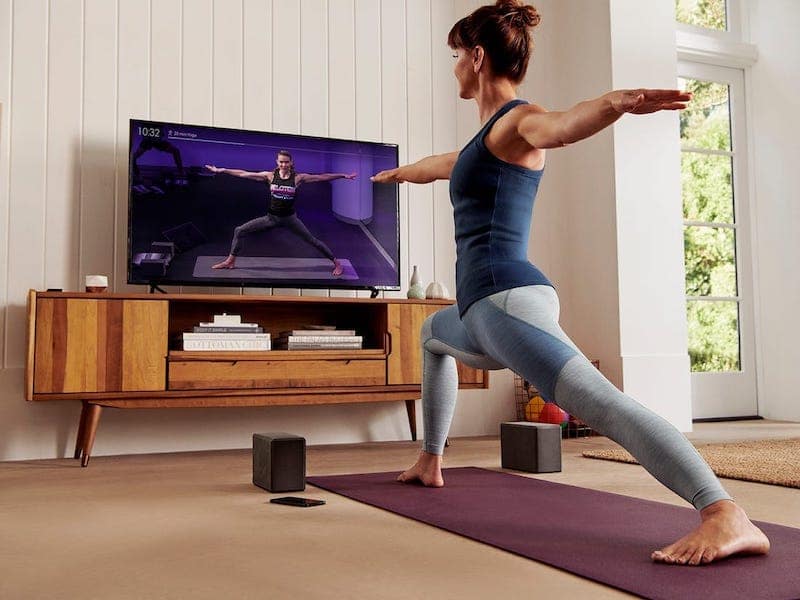 Another digital at-home fitness option, Peloton Digital offers a variety of home fitness options, many of which can help direct workouts on other equipment. The Peloton Digital experience still offers the same level of connectivity and social sharing as other Peloton products. It can be used in conjunction with a piece of Peloton equipment, or the membership can stand on its own, allowing for flexibility in consumption.
As with the other digital at-home fitness options, Peloton Digital does not offer AI or smart technology capabilities, however unlike the other digital fitness offerings on this list, there are opportunities to connect and work out “with” other users.
Score: 4.4/5
Another digital at-home fitness option, Peloton Digital offers a variety of home fitness options, many of which can help direct workouts on other equipment. The Peloton Digital experience still offers the same level of connectivity and social sharing as other Peloton products. It can be used in conjunction with a piece of Peloton equipment, or the membership can stand on its own, allowing for flexibility in consumption.
As with the other digital at-home fitness options, Peloton Digital does not offer AI or smart technology capabilities, however unlike the other digital fitness offerings on this list, there are opportunities to connect and work out “with” other users.
Score: 4.4/5
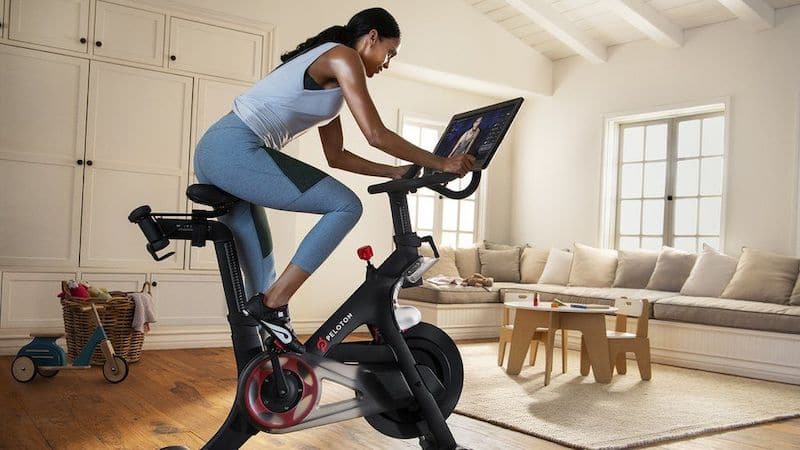 This may not be a surprise, but at the top of the list is the market leader, Peloton. Peloton launched its first bike in 2014, and has since grown to a cult-like following of over 3 million users. They ranked the highest in the production category, with the emphasis on creating an immersive, in-gym experience with the workouts offered and music fit. Peloton was also strong in Talent, as they have attracted well-qualified instructors with various coaching styles to lead their workouts. Distribution was also a highlight for the Peloton Bike, who offers live, encore, and on-demand workouts.
Peloton lost a few points for its ease of use and use of AI. While Peloton does have some smart sensors built in to pick up on aspects such as cadence and heart rate, it does lack some of the AI capabilities of other equipment options. Additionally, Peloton does require the purchase of special clip-in shoes beyond the initial bike purchase.
Score: 4.6/5
This may not be a surprise, but at the top of the list is the market leader, Peloton. Peloton launched its first bike in 2014, and has since grown to a cult-like following of over 3 million users. They ranked the highest in the production category, with the emphasis on creating an immersive, in-gym experience with the workouts offered and music fit. Peloton was also strong in Talent, as they have attracted well-qualified instructors with various coaching styles to lead their workouts. Distribution was also a highlight for the Peloton Bike, who offers live, encore, and on-demand workouts.
Peloton lost a few points for its ease of use and use of AI. While Peloton does have some smart sensors built in to pick up on aspects such as cadence and heart rate, it does lack some of the AI capabilities of other equipment options. Additionally, Peloton does require the purchase of special clip-in shoes beyond the initial bike purchase.
Score: 4.6/5

Struggling to find the best sports facilities tools for your business? You’re not alone. Managing a sports facility in 2025 comes with unique challenges. Whether

Whether you’re just starting out or you’re looking for ways to take your sports facility to the next level, there are resources and tools available to help you achieve your goals and succeed in the competitive youth sports industry. We’ve compiled a list of ten of our most popular sports facility management resources that can help you gain a competitive edge.